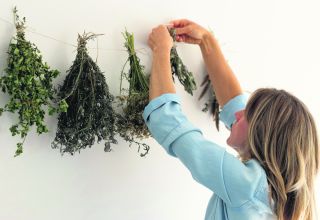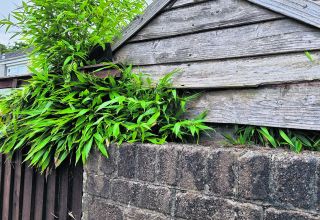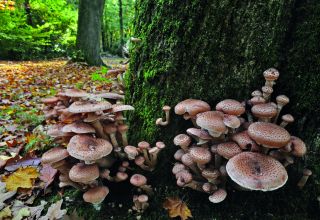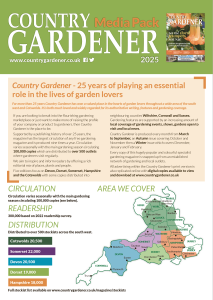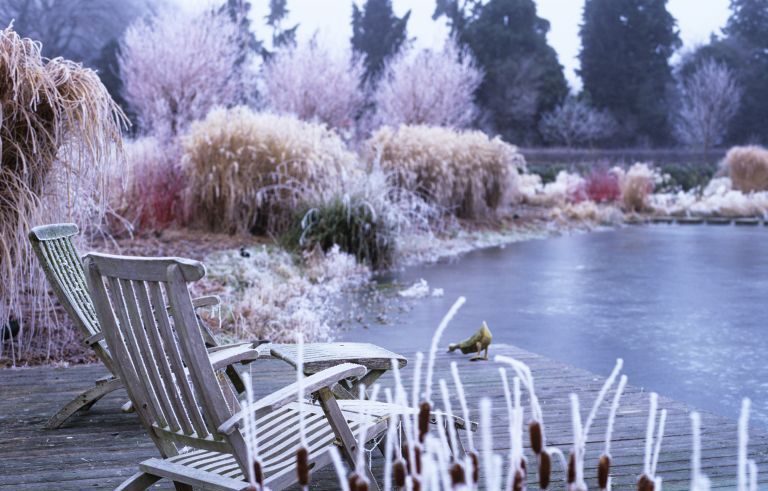
Now winter is seriously with us many gardeners feel a familiar emptiness creeping in. Some see this as a season of no gardening until that glorious spring warmth returns.
There is good news though. The reality is there is still lots to do and its not just a case of finding jobs for the sake of it. A lot of important tasks will make life easier for when the spring tasks start to mount up . We have some tips for what to do during these gardening free winter months. From preparation to growth, there is no reason gardening needs to stop on those cold, frosty days.
When the snow and ice arrive make sure to gently brush heavy snow from trees and shrubs but allow ice to melt naturally. Prune limbs damaged by ice and snow immediately break to prevent tearing the bark. Additionally, foot traffic on frozen lawns can injure turf grass, so be sure to walk on sidewalks and paths.
Using sand, bird seed or sawdust is excellent traction if paths are icy. You need to avoid salt or de-icers as they may injure your plants.
Polish your tools
As this won’t be a time where you will be using your equipment so much, winter is a good time to spruce up the garden shed and re-organize your gardening tools.
After you have cleaned and sharpened them, you can overwinter metal-blade tools by storing them in an old pot filled with a mixture of clean sand and vegetable oil.
In addition, rub wood handles with linseed oil before storage and paint them with bright colours so they’re easier to spot in the garden. When spring comes and the tools are ready to be used, simply wipe the metal tools down with burlap and get to working on making your garden beautiful.
Time for bulbs
If you didn’t manage to get your bulbs in the ground before it froze, you can still plant them in January in individual peat pots.
Set the pots in flats outside and bury them under a thick blanket of leaves and then as soon as the weather permits you can transplant them into the ground.
If you have summer bulbs in storage, keep an eye on them to make sure they are not drying out and show no signs of doing so. Make sure to discard any that show signs of rot.
Pruning
Winter is actually one of the best times of year to prune the deciduous plants in your garden this is because when plants are dormant, they are less likely to transmit disease or attract insects.
The best time is to wait for a mild, sunny day, get out your pruners and take advantage of the fact that bare branches make it easier to see what needs to be shaped and trimmed.
In addition, because hibiscus bloom on new growth, pruning them in late winter will help encourage a more profuse show in the spring.
 Keeping a plant journal
Keeping a plant journal
During the winter months is a good time to take stock of what you have been growing to plan for the year ahead. Creating a diary of what grows in your garden and making a complete plant inventory, recording the location, bloom time, past performance, source, age, pest problems and solutions for each specimen will help to plan for the future.
Allow yourself to succumb to the temptation of the seed and nursery catalogues that are arriving now and plan some additions to your landscape. Be sure to choose plants with improved insect, disease and drought-tolerance and make regular entries as each season passes.
This way you can ensure to get the very best from your garden all year round.
Check your seed
If you happen to have seeds left over from last year’s planting now is a good time to sprout a test sample before you re-order what you need for spring.
To check your seeds, dampen a paper towel and sprinkle it with a few seeds then roll it up. Make sure to keep it moist and warm, which I know can be difficult in winter, and check for germination in about a week.
If fewer than half of them sprout, it’s time to order fresh seed. This saves you wasting your time and money on bad seeds.
Think of the birds
It isn’t just you who can’t enjoy your garden as much as normal, the birds suffer as well. Make sure to provide much-needed nourishment for the birds whose natural food supplies may have been buried in winter storms.
You can help them by putting fresh water out daily and keep feeding stations stocked and hang cakes of suet in trees to attract insect-loving woodpeckers. This is also a good time to make plans to plant trees, shrubs and vines that will create wild food sources and natural habitat for the birds you want to attract in the coming year. Finally, you should set up bird houses to encourage nesting when spring comes.
Make your bed
Make sure to prepare perennial beds for spring re-growth in late March. Clear your beds by removing weeds and dead foliage and then re-cover plants at night just in case the frost returns.
You should also carefully loosen winter mulch from around plants and divide your summer and fall blooming perennials. Your ornamental grasses should be cut back to ground level ready for new growth appearing.
Give the lawn spring mowing to remove old growth before new growth begins and finally overseed any thin spots and bare patches.
Everything ready for the year ahead of you.
Grow!
The growing doesn’t have to stop either. Cold frames and floating row covers will help satisfy your urge to grow and get a head start on spring.
Make sure to follow package instructions for the right time and place to sow seeds, regardless of whether you are planting indoors or out and as soon as seeds sprout, no matter where you plant, be sure to provide ample light to encourage stocky growth.

